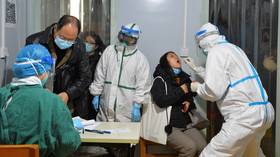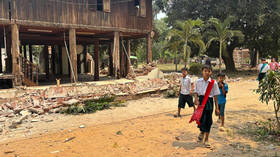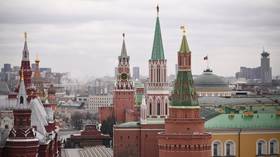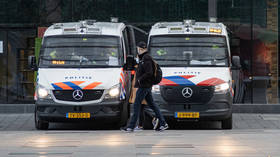China tests more than 250,000 people in three days to contain new Covid cluster

The Chinese government has tested 255,200 people in the southern city of Chengdu for Covid-19 after an elderly couple were diagnosed on Monday and contact tracing was completed to establish potential transmissions.
Chengdu’s Health Commission announced that four individuals tested positive and one individual was found to be asymptomatic, alongside the two initial infections. All six people were taken to Chengdu’s Public Health Clinical Center to be quarantined and await further testing and treatment.
In order to swiftly contain the virus, health authorities conducted widespread testing, contained five areas in the local district, closed schools and kindergartens, and ordered students and teachers to quarantine until they receive a negative Covid test result.
Footage circulating on social media showed dozens of medical workers in hazmat suits gathering in the city to facilitate mandatory mass testing before the virus could spread.
Medical workers were mobilized after 4 new covid cases were found in Chengdu😂 pic.twitter.com/As208BZBRt
— peterpanza (@peterpanza1) December 9, 2020
Secretary of the Communist Party of China’s Sichuan Committee Peng Qinghua declared that the area had entered “wartime mode” to reduce the risk of a wider outbreak.
The source of the recent outbreak has not immediately been revealed but local officials said that Covid-19 had been detected on food that was being stored in a fridge and on a chopping board in their property.
READ MORE: Hundreds of flights canceled following coronavirus outbreak at Shanghai airport
However, the World Health Organization believes there is no current evidence that the virus can be transmitted by food or packaging.
The incident in Sichuan’s Chengdu was the first outbreak of new Covid-19 cases in the city in nine months and comes nearly a year after the virus was first detected in Wuhan. The local region is currently planning a mass vaccination campaign and the area’s two-million-strong high-risk population is expected to be inoculated by the end of the year, with the remaining groups due to receive the jab by February.
Like this story? Share it with a friend!














